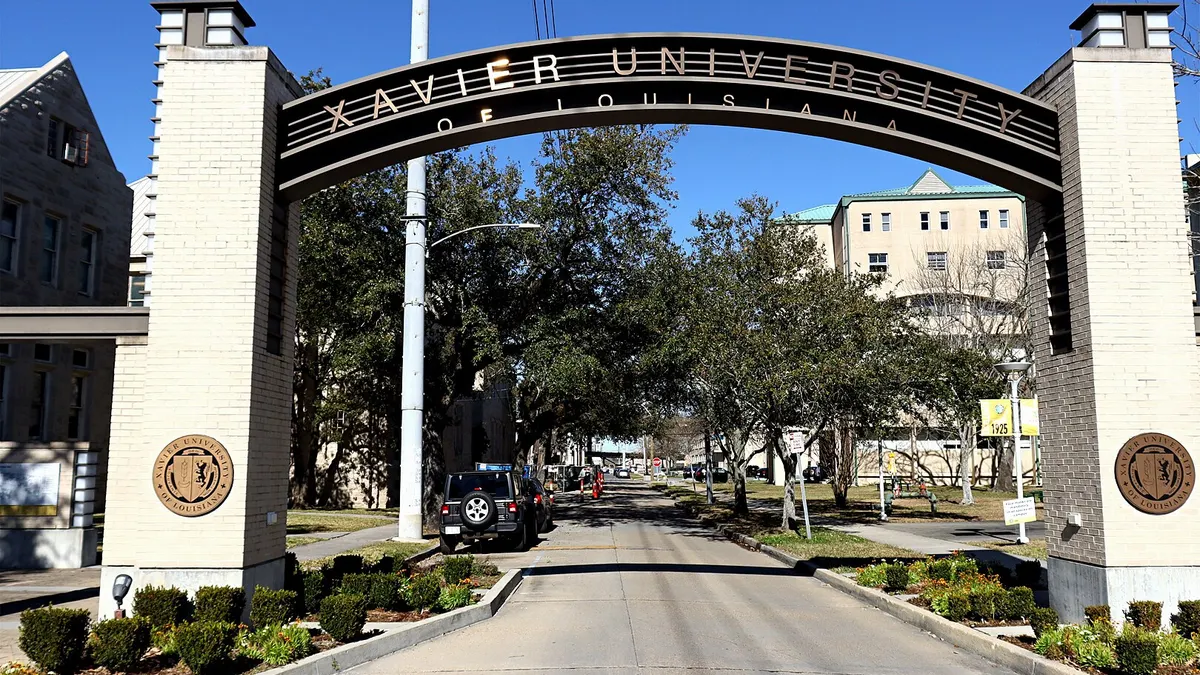Education Dive:
- New Mexico's governor on Wednesday announced a plan to make tuition and fees free for residents at all 29 state colleges and universities.
- Gov. Michelle Lujan Grisham's free college plan is one of the most ambitious yet in the U.S. Under the initiative, college tuition would be free for all recent high school graduates regardless of income. Adult learners, however, would be limited to free tuition at community colleges.
- The plan must be approved by the state's Democrat-controlled legislature, which has signaled interest in increasing funding to higher education.
Dive Insight:
Grisham cast the plan as a way to increase college access after years of declining support for higher education in New Mexico. "Higher education institutions in this state, especially in recent memory, are all too familiar with the short end of the stick, a shrinking piece of the pie, being often used as a political football," she said during an event Wednesday announcing the plan.
Roughly 20 states offer free tuition for some students at community colleges. If New Mexico rolls out free tuition at four-year colleges, it will join the ranks of only a handful of states with the initiative.
New York blazed the path for others in 2017, when it implemented a first-of-its-kind program that covers tuition at both community colleges and public universities for any first-time, full-time student with a family income of less than $125,000. New Mexico's proposal is similar on several fronts, with a few key differences.
For one, it does not restrict eligibility based on income. "We want universal access to higher education in the state," Carmen Lopez-Wilson, deputy cabinet secretary of New Mexico's Higher Education Department, told Education Dive.
State government officials expect that 55,000 students will participate annually, costing New Mexico between $25 million and $35 million each year.
That total cost is relatively low compared to other states' free or reduced-tuition college plans. For instance, Washington state expects its program will cost more than $800 million in the first few years.
That's because New Mexico's plan is a last-dollar program, meaning it pays for any remaining tuition and fees after all grants and scholarships have been used. Washington state's, on the other hand, is a first-dollar program, which allows eligible students to receive the full-tuition benefit as well as any other aid for which they qualify.
Additionally, New Mexico has some of the lowest tuition rates in the country and offers several scholarships for residents due to the state's high-poverty rate, Lopez-Wilson explained.
"We can build on the scholarship programs that are already in place that students have access to and we can build on federal aid, so what's really needed is that last-dollar fund so students aren't left with an unexpected (amount) they need to pay for tuition and fees," she added.
However, college access experts have been critical of last-dollar programs because they don't account for expenses beyond tuition that can bar a student from attending, such as transportation and housing costs.
In fact, a recent report from the Institute for Higher Education Policy found that free college programs in New York and Tennessee often didn't help low-income students pay for their education because their tuition costs were already covered through other aid.
The institute recommends that states "invest first and foremost in low-income students," fund their non-tuition expenses and avoid restrictive eligibility requirements to create more access in higher education







